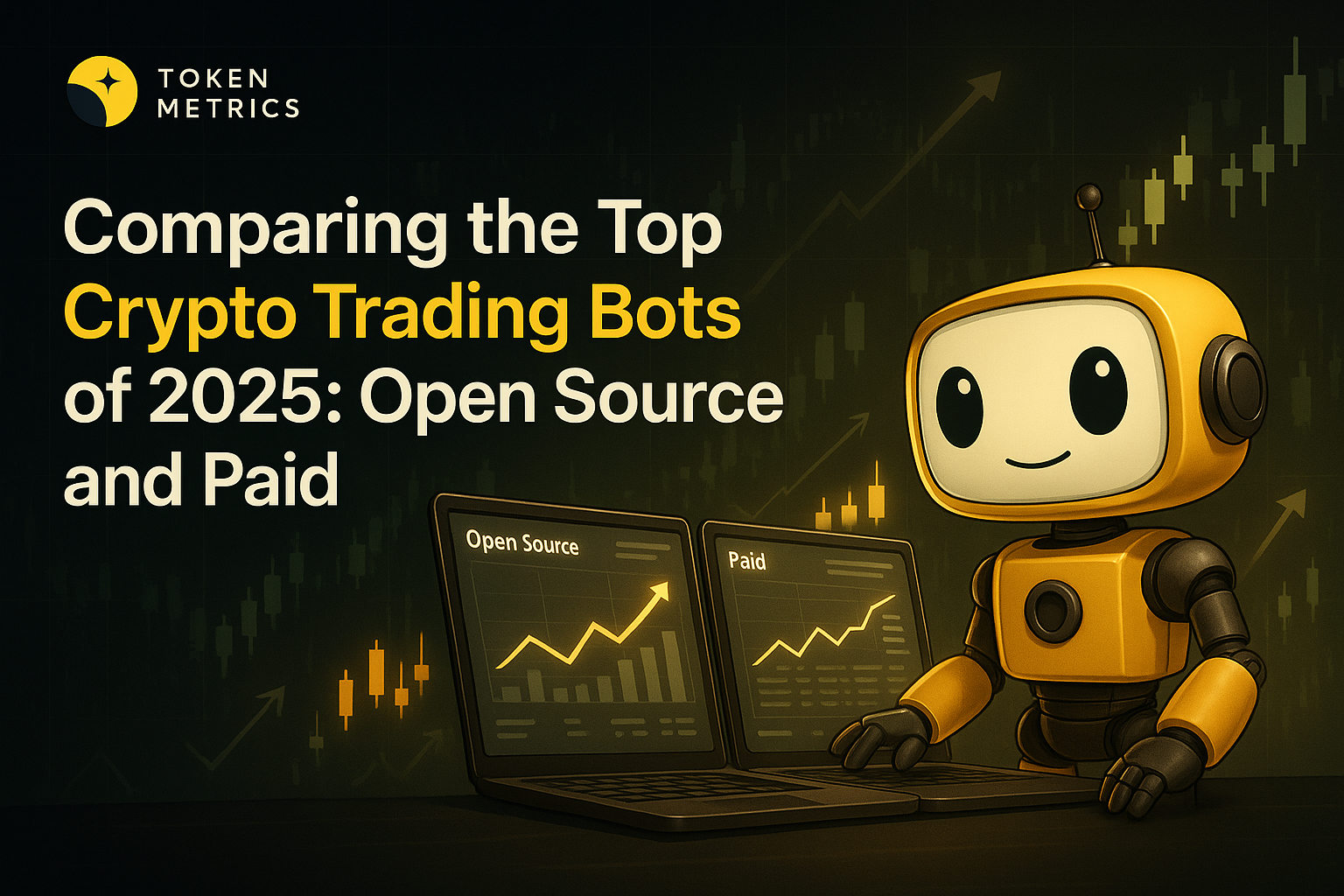
7 Proven Strategies to Maximize Returns with Token Metrics AI Indices in 2025

Crypto indices have revolutionized diversification and portfolio management, but real outperformance hinges on how intelligently you use platforms like Token Metrics. Unlocking their full potential takes more than passive investing—it requires a blend of AI insights and disciplined strategy.
Understanding Token Metrics' AI-Powered Edge
Token Metrics indices stand out thanks to AI-driven technology analyzing over 80 data points per token. These cover a wide array of crypto themes—Memecoins, RWAs, AI Agents, DeFi, Layer 1s, and more—and are fine-tuned with weekly rebalancing based on dynamic market signals.
This robust data suite, coupled with frequent rebalancing, enables responsive and intelligent index management, optimizing exposure to compounding opportunities while mitigating market risks.
Strategy #1: Multi-Index Allocation for Smart Diversification
A common pitfall is putting all your capital into a single index. Top performers, however, diversify across multiple Token Metrics indices, targeting different market segments to balance stability and growth.
Consider a three-tier framework:
This structure ensures you capture core market resilience, trend-led growth, and high-risk/high-reward opportunities.
Dynamic reallocation based on market cycles further refines the strategy:
Token Metrics' Market Analytics can inform these allocation shifts using data-driven bullish or bearish signals.
Strategy #2: Sector Rotation to Follow the Leaders
Different crypto sectors peak at different points in the macro cycle. By monitoring Token Metrics' sector-specific indices, investors can rotate allocations to capture the strongest trends.
Typical cycle stages:
A tactical example: Begin with 60% in an Investor Index during an early bull phase, then pivot a portion to sector leaders as outperformance emerges, using clear quantitative signals from Token Metrics analytics.
Don’t try to predict sector winners; let relative performance guide your rotation decisions.
Strategy #3: Choose the Right Time Horizon Through Rebalancing
Each investor’s available time and risk tolerance should match the index’s rebalancing schedule. Token Metrics provides:
Misaligning your activity level with rebalancing frequency can mean missed signals or excessive trading costs. Honest self-assessment leads to better index selection and results.
Strategy #4: Enhance Results with Smart Dollar-Cost Averaging (DCA)
Classic lump-sum investing exposes you to timing risk. Strategic DCA smooths entries, especially when adapted to market signals:
Such approaches can be tailored with Token Metrics' analytic tools and AI-powered signals.
Strategy #5: Systematic Risk Management and Position Sizing
Disciplined risk rules are essential to avoiding outsized losses. Key principles include:
Portfolio discipline enables long-term participation and helps minimize drawdowns.
Strategy #6: Strategic Rebalancing Between Indices
Active rebalancing adjusts exposure as market conditions evolve—not just at set intervals. Quarterly reviews help identify outperformers to trim, underperformers to top up, and spot for new opportunities.
Monitor index correlations to ensure real diversification. Use data from Token Metrics' analytics to guide dynamic weight changes if bullish or bearish triggers are hit.
Strategy #7: Unleashing the Full Token Metrics Ecosystem
Take advantage of Token Metrics’ full feature set to maximize insights and execution quality:
Structuring a weekly routine with market check-ins, grade reviews, and strategy adjustments ensures you stay disciplined and data-driven. Leverage all Token Metrics tools for robust, systematic investing.
Avoiding Common Mistakes and Measuring Real Performance
Frequent pitfalls include over-trading, ignoring risk controls, emotional overrides of AI signals, insufficient diversification, forgetting taxes, and chasing hype. Sticking to the above frameworks and monitoring KPIs like absolute return, Sharpe ratio, drawdowns, and portfolio health can keep performance on track.
Effective performance measurement includes:
Regular performance and process auditing can lead to continuous improvement.
Real-World Scenarios and Action Plans
Three illustrative approaches:
Click here to signup for free trial account!
Regardless of style, following a clear 30-day roadmap—risk assessment, strategic setup, ongoing refinement—positions you for systematic, data-driven execution over the long term.
Conclusion: Succeeding with Token Metrics Indices
Success stems from synergy: Multi-index allocation, sector rotation, time-matched rebalancing, advanced DCA, rigorous risk management, active rebalancing, and full use of Token Metrics’ AI ecosystem work best together. Even partial adoption can improve outcomes versus passive approaches, while full mastery unlocks maximum performance through discipline and superior analytics.
The journey to consistent crypto performance favors intelligent frameworks and systematic execution. By aligning human strategy with AI insights, investors can aim to capture attractive results while managing risk responsibly.
Discover Crypto Gems with Token Metrics AI
Token Metrics uses AI-powered analysis to help you uncover profitable opportunities in the crypto market. Get Started For Free
FAQs
What makes Token Metrics indices unique?
Token Metrics indices utilize AI and 80+ data points per token, paired with dynamic rebalancing, enabling more adaptive, diversified, and data-informed exposure than traditional indices.
How does weekly rebalancing impact portfolio performance?
Frequent rebalancing helps capture gains, prune underperformers, and stay aligned with emerging trends—compounding results and maintaining optimal portfolios throughout market cycles.
Should I use multiple Token Metrics indices or focus on one?
Diversifying across several indices affords stability while allowing portions of the portfolio to chase growth or sector-specific opportunities, reducing concentrated risk.
How can I decide my crypto allocation and position sizes?
Assess your risk tolerance and time horizon. Use established rules—like capping crypto at a fraction of your net worth—and diversify within crypto between core, growth, and opportunity indices.
Is Token Metrics only for advanced users?
No. Token Metrics offers accessible indices and tools for beginners, plus granular analytics, APIs, and automation features for advanced investors seeking a data-powered edge.
Disclaimer
This guide is for educational and informational purposes only. Nothing contained herein constitutes investment advice, financial recommendations, or a guarantee of results. Crypto assets are volatile and may not be suitable for all investors. Please consult a qualified financial advisor and conduct your own research before making financial decisions. Past performance is not indicative of future outcomes.
Click here to signup for free trial account!

.svg)

Create Your Free Token Metrics Account

.png)




%201.svg)
%201.svg)


%201.svg)









.svg)




.png)